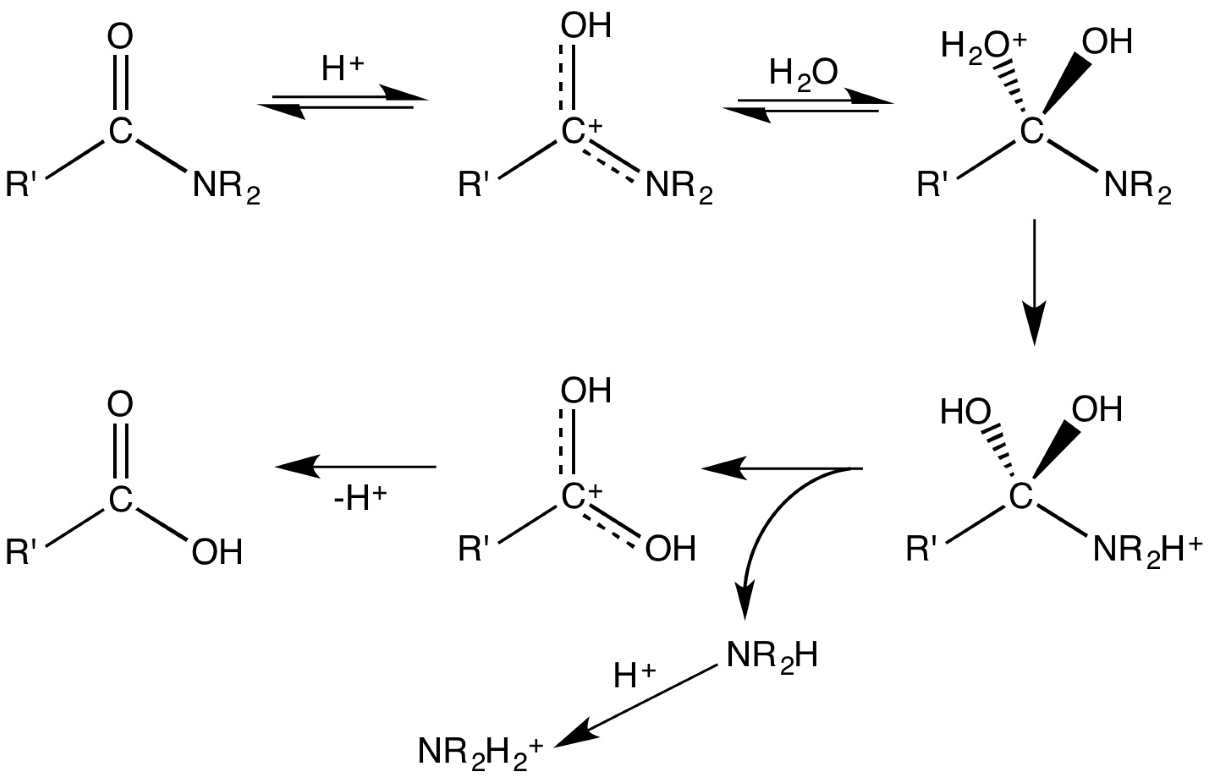
Amides are an important class of organic compounds that play a crucial role in various fields, including chemistry, biology, and industry. Derived from carboxylic acids, amides are versatile molecules with unique properties and fascinating applications.
In this article, we will explore nine surprising facts about amides that will deepen your understanding of these compounds and shed light on their significance. From their diverse structural forms to their critical role in biological systems, amides are more than just a group of carbon, nitrogen, and oxygen atoms bonded together. So, let’s dive into this captivating world of amides and discover some intriguing aspects that you may not be aware of.
Key Takeaways:
- Amides are essential in drug synthesis and DNA stability, playing a crucial role in medicine and genetics.
- From proteins to polymers, amides are versatile compounds with diverse applications in various industries, shaping our everyday lives in surprising ways.
Amides are versatile organic compounds.
Amides belong to the class of organic compounds that contain a carbonyl group (C=O) bonded to a nitrogen atom. They are widely used in various industries, including pharmaceuticals, plastics, and agrochemicals.
Amides exhibit unique properties.
Amides have a wide range of physical and chemical properties, depending on their molecular structure. They can be solid, liquid, or gas at room temperature and can have varying solubilities in different solvents.
Amides are important building blocks in drug synthesis.
Many drugs, including antibiotics and painkillers, contain amide functional groups. Amides play a crucial role in drug design and synthesis due to their stability and ability to interact with biological targets.
Amides are found in proteins.
Proteins, which are essential biological macromolecules, are made up of amino acids joined together by peptide bonds, which are amides. These peptide bonds give proteins their unique structure and function.
Amides have diverse applications in the polymer industry.
Amides are commonly used as monomers in polymer synthesis. They contribute to the properties of polymers such as strength, flexibility, and resistance to heat and chemicals. Examples of amides used in polymer production include nylon and polyacrylamide.
Amide bonds are essential for DNA replication.
In DNA, the genetic material of living organisms, the backbone is made up of a sugar-phosphate chain connected by phosphodiester bonds, which are amide bonds. These bonds ensure the stability and integrity of the DNA molecule during replication.
Amides can be synthesized through various methods.
Amides can be synthesized through a variety of methods, including the reaction between an acid chloride and an amine, the reaction between an acid anhydride and an amine, or the reaction between an acid and an amine in the presence of a coupling reagent.
Amides have different names based on their substituents.
Amides are named based on the substituents attached to the nitrogen atom. For example, if the amide nitrogen is attached to a methyl group, it is called N-methylamide. This nomenclature system helps to describe the specific molecular structure of the amide compound.
Amides can exhibit different physiological effects.
Amides can have a range of physiological effects on the human body. For example, some amides act as local anesthetics, while others have anti-inflammatory or analgesic properties. Understanding these effects is essential in the development of new drugs and therapeutic treatments.
Conclusion
Amides are fascinating compounds that play a crucial role in various fields of chemistry. They are widely used in pharmaceuticals, polymers, and organic synthesis. Understanding the unique properties and characteristics of amides can greatly contribute to advancements in these areas.
From their important role in peptide bonds to their ability to form hydrogen bonds, amides offer a wide range of applications and possibilities. By exploring the chemical structure and behavior of amides, scientists can make significant discoveries that may shape the future of medicine, materials science, and other disciplines.
Overall, the study of amides presents exciting opportunities for researchers and chemists alike. By delving deeper into this area of chemistry, we can unlock new insights and advancements that will undoubtedly contribute to the progress of various industries.
FAQs
1. What are amides?
Amides are organic compounds derived from carboxylic acids. They consist of an amine group (-NH2) and a carbonyl group (-C=O) linked together by a nitrogen atom.
2. What are the uses of amides?
Amides have various applications, including acting as intermediates in the synthesis of pharmaceuticals, serving as components in polymers, and acting as solvents or reagents in organic chemistry reactions.
3. How do amides participate in hydrogen bonding?
Due to the presence of both a nitrogen and an oxygen atom in the amide functional group, amides can form hydrogen bonds. This property makes them important in maintaining the secondary and tertiary structures of proteins.
4. Can amides be found in nature?
Yes, amides can be found in nature. They are an essential component of proteins, which are vital for the structure and function of every living organism.
5. Can amides exhibit isomerism?
Yes, amides can exhibit different types of isomerism, including structural isomerism and stereoisomerism. The presence of different substituents in the amide molecule can result in structural isomers, while the arrangement of substituents around the nitrogen atom can lead to stereoisomers.
Amides' fascinating properties and roles in organic chemistry have captivated your interest, but don't stop exploring now! Delve into the surprising facts about Lsa, a potent psychedelic compound. Marvel at the astounding beauty of Saiful Muluk Lake, a hidden gem in Pakistan. Finally, immerse yourself in the gritty realism of Ratcatcher, a thought-provoking film that explores poverty and desperation in Glasgow. Each topic offers unique insights and perspectives that will leave you craving more knowledge. So, which captivating subject will you choose to explore next?
Was this page helpful?
Our commitment to delivering trustworthy and engaging content is at the heart of what we do. Each fact on our site is contributed by real users like you, bringing a wealth of diverse insights and information. To ensure the highest standards of accuracy and reliability, our dedicated editors meticulously review each submission. This process guarantees that the facts we share are not only fascinating but also credible. Trust in our commitment to quality and authenticity as you explore and learn with us.


